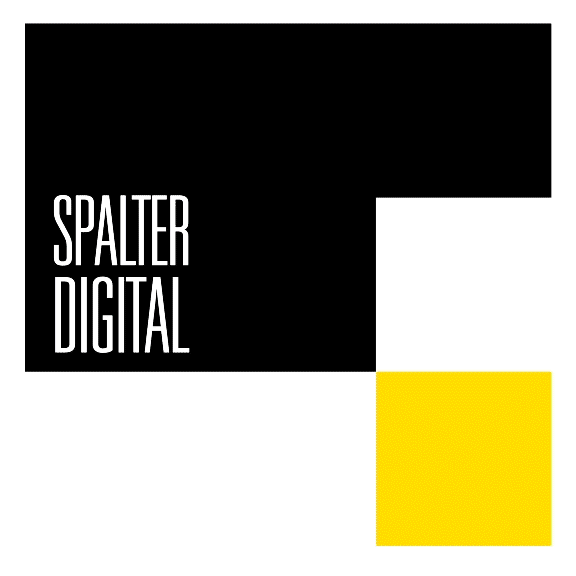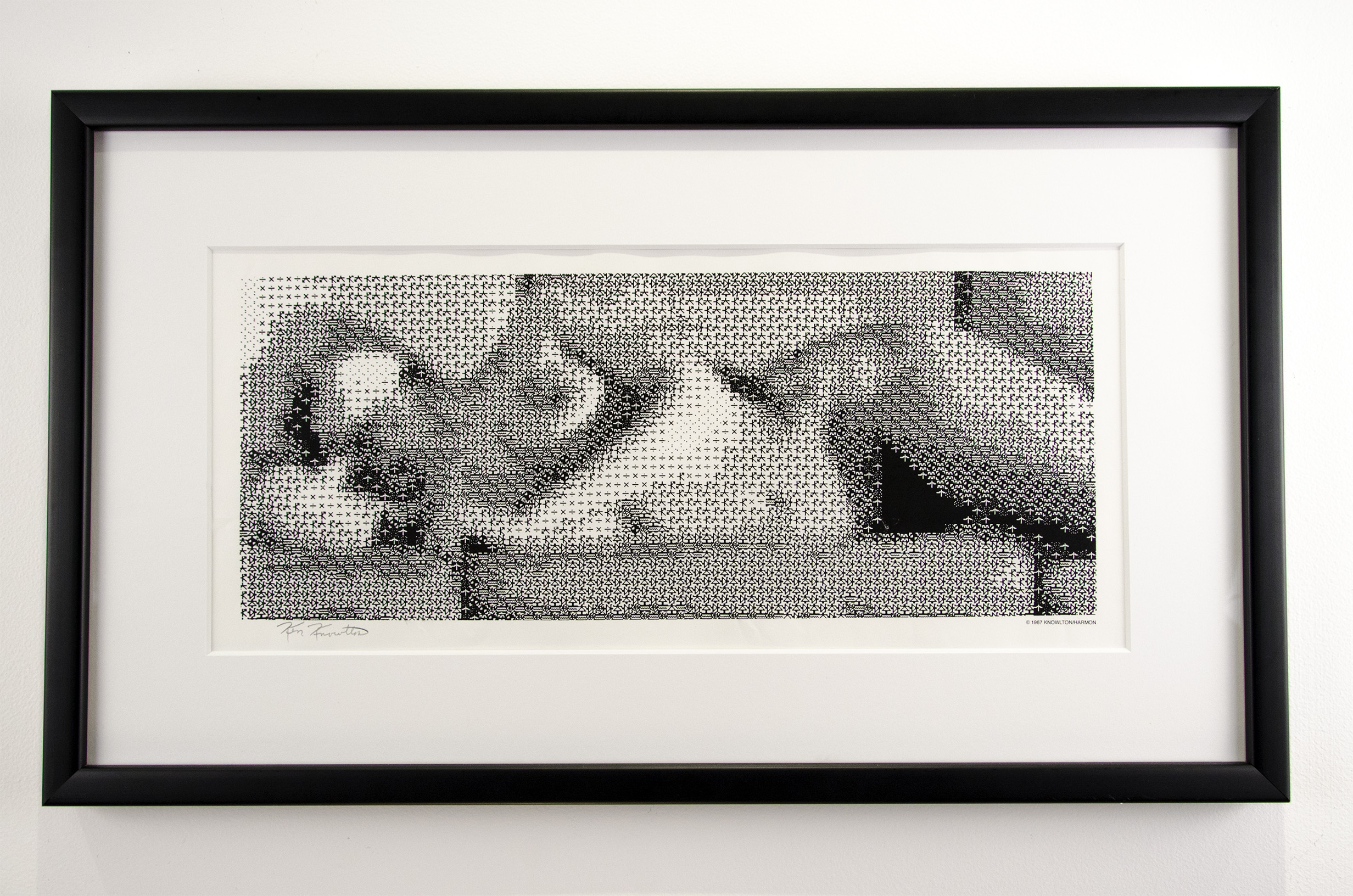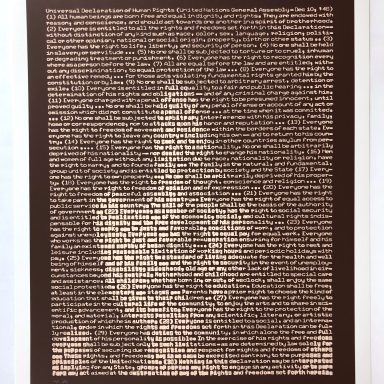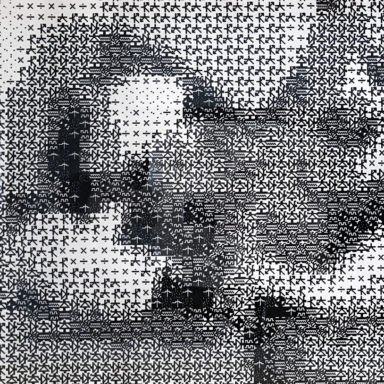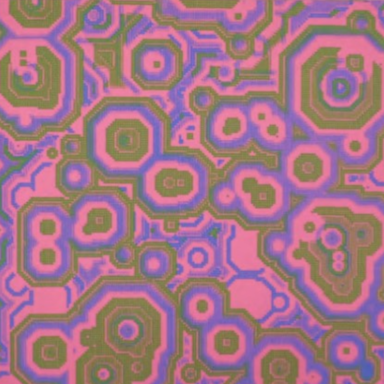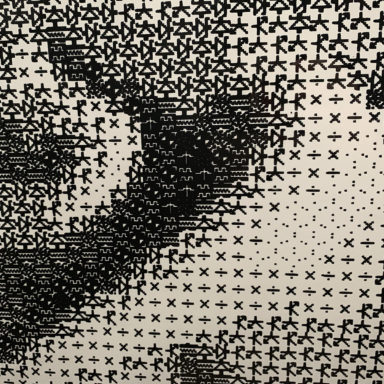Basic Information
Title: Computer Nude (Studies in Perception I)
Artist(s):
Kenneth C. Knowlton
Leon D. Harmon
Date Created: 1967
Framed Dimensions: 12.75 x 22 in.
Unframed Dimensions: 6 x 15.25 in.
Medium: computer processed photograph printed from microfilm on paper
Inventory ID: Knowlton/Harmon-1967-01
Description
signed by Kenneth Knowlton in graphite lower left
copyrighted, dated, and artist’s names printed lower right
from the small paper edition
Computer Nude (Studies in Perception I) is the most widely circulated early artwork made using a computer. It demonstrates the unique capacity of the viewer’s brain to interpret a composition of abstract symbols grouped to emulate areas of tonal value as a human figure. Leon Harmon, a researcher in cognitive neuroscience, and Ken Knowlton, a computer engineer at AT&T’s Bell Labs, reenvisioned a photograph of dancer Deborah Hay as a bitmap mosaic using a program they developed. Harmon and Knowlton were brought together by Experiments in Art and Technology (E.A.T.). Organized in 1966 by engineers Billy Klüver (American, born Monaco, 1927–2004) and Fred Waldhauer (American, 1927–1993), and artists Robert Rauschenberg and Robert Whitman, this nonprofit group aimed to provide creative minds with access to new technology and engineering professionals.
Rauschenberg hung a copy of this image in his studio during a press conference for an E.A.T. event. It was photographed and subsequently reproduced in an October 11, 1967, article in The New York Times titled “Art and Science Proclaim Alliance in Avant-Garde Loft,” becoming the publication’s first full-frontal nude. Due to the popularity of the image, a limited-edition screen print was created from the original work.
Label from Giant Steps: Artists and the 1960s, June 30–December 30, 2018
Description via Albright Knox Museum.
